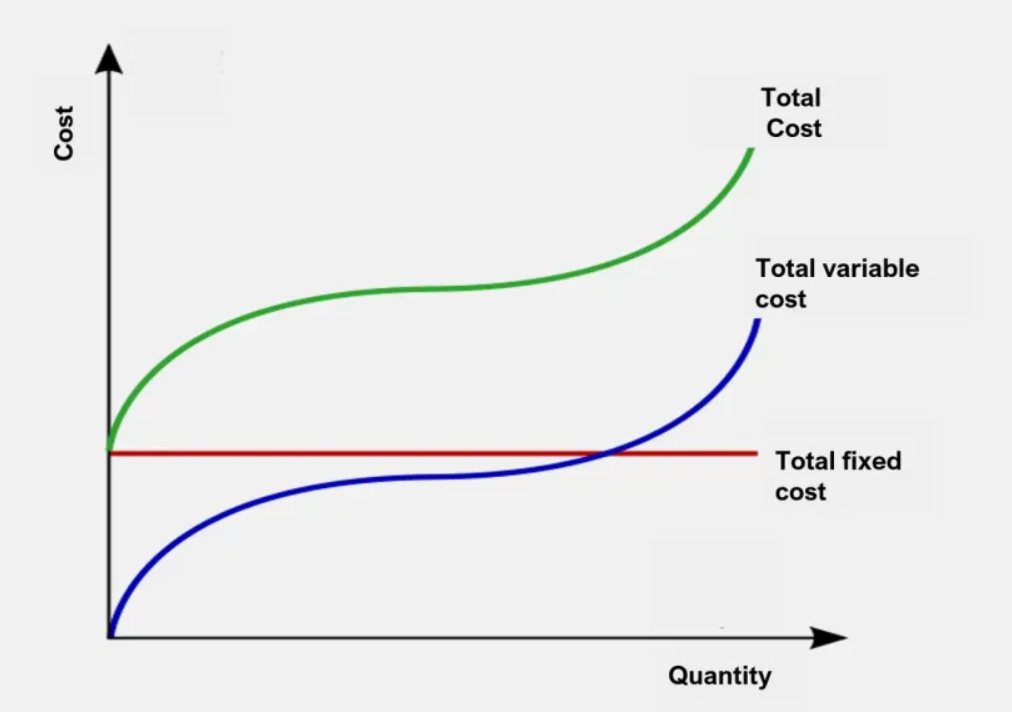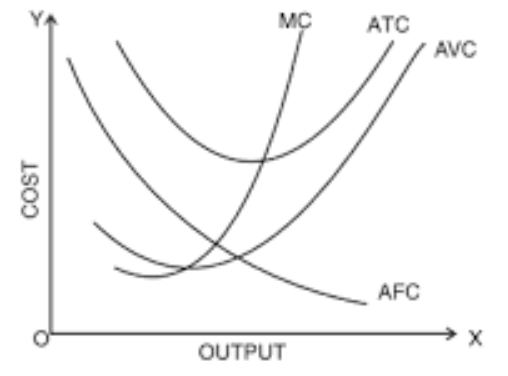📘 Short-Run Costs in Economics
In the short run, at least one factor of production is fixed (usually capital like machinery or plant size), while others (like labour or raw materials) are variable. This leads to a distinct cost structure made up of both fixed and variable costs.
🔹 1. Total Costs in the Short Run

1.1 Total Fixed Cost (TFC)
-
Definition: Costs that remain constant regardless of output level.
-
Examples: Rent, insurance, salaries of permanent staff.
-
Formula:
TFC = Constant
1.2 Total Variable Cost (TVC)
-
Definition: Costs that vary directly with the level of output.
-
Examples: Wages (hourly), raw materials, fuel.
-
Formula:
TVC = f(Q) (increases as output increases)
1.3 Total Cost (TC)
-
Definition: The sum of fixed and variable costs.
-
Formula:
TC = TFC + TVC
🔹 2. Average Costs in the Short Run aka Per Unit Costs

2.1 Average Fixed Cost (AFC)
-
Definition: Fixed cost per unit of output.
-
Formula:
AFC = TFC / Q
-
Behavior: Declines continuously as output increases (spreading overhead).
2.2 Average Variable Cost (AVC)
-
Definition: Variable cost per unit of output.
-
Formula:
AVC = TVC / Q
-
Behavior: U-shaped due to increasing and then diminishing returns to the variable input.
2.3 Average Total Cost (ATC)
-
Definition: Total cost per unit of output.
-
Formula:
ATC = TC / Q = AVC + AFC
-
Behavior: U-shaped; falls at first due to falling AFC and rising efficiency, then rises due to rising AVC.
🔹 3. Marginal Cost (MC)
✅ Definition:
The extra cost incurred by producing one more unit of output.
🔍 Formula:
MC = ΔTC / ΔQ = ΔTVC / ΔQ
Note: Since TFC is constant, the change in TC is due entirely to change in TVC.
📈 Behavior:
-
Typically U-shaped.
-
Initially decreases due to increasing marginal returns.
-
Increases due to the Law of Diminishing Returns.
🔁 Relationships Among Short-Run Costs
-
MC intersects AVC and ATC at their minimum points.
-
ATC = AVC + AFC at all output levels.
-
AFC continuously declines, causing the gap between ATC and AVC to narrow.